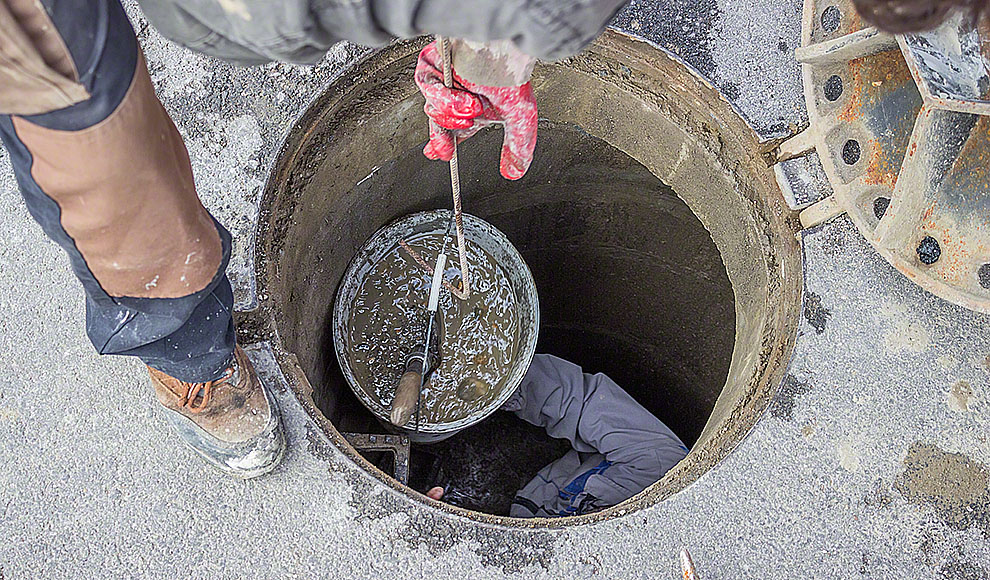There could be nothing more hassling than a broken underground pipe, you need to call drain cleaning services for immediate help if something like this happens. Below is an explanation of how you can fix the underground broken pipes.
Locate the Pipe First
You may already know that drain problems that are not solved quickly lead to diseases and allergies in people living in that house or building. So, fixing it should be your first priority.
The first thing to do while fixing a broken pipe is to locate it. For that, you would need to dig a hole in the ground and find the broken pipe. But, if you don’t know where the broken pipe is then, look for the outer signs for example; extra green grass, wet areas and sinkholes. Once you have successfully located the pipe, dig a little deeper about 6 inches below the pipe so that you get enough area to repair it.
Remove the Broken Pipe
In order to remove the pipe, you would have to cut it from both sides of the broken part. Mark two inches from the broken area to both sides for more accurate cutting and cut through the pipe. There are various types of cutting tools depending on the material of which the pipe is made of for example:
- For clay pipes: Hacksaw or reciprocating saw works the best.
- For lead pipes: Hacksaw can be used.
- For cast iron pipes: A saw having a metal-cutting blade would work perfectly.
- Use the right cutting tool for your pipe and cut through it very carefully and make sure you have removed every single piece of the broken pipe.
Accurately Measure and Cut a New Pipe
Once you have removed the broken pipe, it’s time to install the new and fresh piece of pipe for which you would first need to measure the broken area where the new pipe would be installed. Ensure that the new pipe that you are going to install have exactly the same diameter as that of the old one so that there won’t be any leakage.
Now take flexible rubber couples and fit them to the existing pipes’ opened end and place the new pipe piece where it is supposed to be. Once the new pipe piece is at its place, slide over the rubber couplings to cover and secure the new pipe at the place. It is very important to perform this step carefully because if you don’t handle it correctly, there could be a chance of leakages from exposed areas of the pipe. But if you do it perfectly then, voila! The pipe has been repaired.
Fill the Hole
Lastly, fill the hole and pour gravel into it so that the pipe gets extra support.
Techniques to Repair Underground Broken Drain Pipes
Trenchless Pipe Repair
One of the most famous technique used by experts from drain cleaning companies is trenchless pipe repair. They first locate the cleanout point and insert acrylic or resin patching material and steer it to the cracked area to repair it. This is quite a quick and much affordable process.
Horizontal Boring
In this technique, new pieces of pipes are sent down to the broken or damaged area of the pipes and are sealed there using adhesive resins. This process doesn’t require any digging, the new pipe piece is inserted from the access point.
Pipe Relining
New and cured pieces of pipes are added in place of the cracked and broken pipes. Pipe relining makes the surface smoother and also seals any gaps present in the old pipeline.
Pipe Bursting
As being understood by the name, this technique involves bursting the broken pipe forcefully and adding a new one with the same diameter in place of the existing one.
Signs of an Underground Broken Pipe
There are a lot of signs that indicate that there is a broken pipe underground. Spotting these signs at an initial stage could be very helpful in preventing serious and hazardous damage. These signs include:
- Sewer and drain obstruction and backups
- Slow draining
- Cracks in the foundation
- Unusual plague of rats and insects
- Growth of mold on the walls
- Unpleasant odors
- Sinkholes in your lawn
- Extra or overgrown grass phowatches
You can fix the broken drainpipes underground yourself too, but it would be better if you contact the drain contractor for more accurate and long-lasting repairs.



